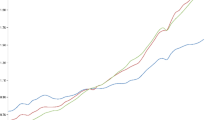Abstract
Auschwitz and Hiroshima stand out as two realities whose uniqueness must be reconciled with their inevitability as outcomes of highly rationalized processes of technoscientific progress. Contrary to Michael Walzer’s notion of “double effect”, whereby unintended consequences and the particular uses to which warfare may lead remain outside the moral purview of scientists, this paper endorses the commitment of the Society for Social Responsibility in Science to argue that members of the technoscientific community are always responsible for their work and the eventual uses made of it. In what follows four related views are outlined pertaining to modern situations within which the technoscientific community operates, so as to highlight the urgency of infusing a sense of responsibility for the products of their activities into this community. A provisional “code” is suggested that may serve as a guide for increased personal responsibility of individual technoscientists (academic scientists and industrial engineers).
Similar content being viewed by others
Notes and references
See the two classic treatises on the historical and empirical evidence concerning the Holocaust: Dawidowicz, L. S. (1975)The War Against the Jews 1933–1945, Bantam Books, New York and Hilberg, R. (1973)The Destruction of the European Jews, New Viewpoints, New York.
Lyotard, J-F. (1982) “New Technologies,”Political Writings (1993) trans. Readings, B. and Paul, K., University of Minnesota Press, Minneapolis, pp. 14–15.
Latour, B. and Woolgar, S. (1986)Laboratory Life: The Construction of Scientific Facts [1979], Princeton University Press, Princeton; see also on this issue: Ormiston, G. and Sassower, R. (1989)Narrative Experiments: The Discursive Authority of Science and Technology, University of Minnesota Press, Minneapolis.
Merton, R. K. (1973)The Sociology of Science: Theoretical and Empirical Investigations, University of Chicago Press, Chicago.
Polanyi, M. (1966)The Tacit Dimension, Doubleday, New York.
Kuhn, T. S. (1970)The Structure of Scientific Revolutions [1962], University of Chicago Press, Chicago.
Winner, L. (1977)Autonomous Technology: Technics-out-of-Control as a Theme in Political Thought. The MIT Press, Cambridge and London, pp. 3–13.
Kant (1970) “An Answer to the Question: ‘What is Enlightenment?’”Kant’s Political Writings, trans. Nisbet, H. B., Cambridge University Press, Cambridge, UK.
Hegel (1967)Hegel’s Philosophy of Right [1821]. trans. Knox, T. M., Oxford University Press, Oxford, UK.
Mill, J. S. (1984)On Liberty [1859], Penguin Books, Harmondsworth, UK.
Smith, A. (1937)An Inquiry into the Nature and Causes of the Wealth of Nations [1776], ed. Cannan, E., The Modern Library, New York, p. 423.
Weber, M. (1968)Economy and Society: An Outline of Interpretive Sociology. University of California Press, Berkeley, Los Angeles, and London, 2 Vol.
Kolakowski, L. (1990)Modernity on Endless Trial. University of Chicago Press, Chicago and London.
Bauman, Z. (1991)Modernity and the Holocaust [1989], Cornell University Press, Ithaca, NY.
Annas, G.J. and Grodin, M. (1992)The Nazi Doctors and the Nuremberg Code: Human Rights in Human Experimentation, Oxford University Press, New York and Oxford.
Arendt, H. (1963)Eichmann in Jerusalem: A Report on the Banality of Evil, The Viking Press, New York.
Habermas, J. (1979)Communication and the Evolution of Society [1976], trans. McCarthy, T., Beacon Press, Boston, MA.
Merton (1973), p. 269.
Ibid.,. pp. 270–278.
Bauman (1991), p. 28.
Merton (1973), pp. 277–278.
Sellars, W. and Hospers, J. (eds.) (1970),Reading in Ethical Theory (2nd ed.). Prentice-Hall, Englewood Cliffs, NJ., (II.A. “Moore and the Naturalistic Fallacy”).
Bauman (1991), p. 29.
Pickering, A., ed. (1992)Science as Practice and Culture, University of Chicago Press, Chicago and London.
Gilbert, M. (1985),The Holocaust: A History of the Jews of Europe During the Second World War, Holt, New York, pp. 426–427.
Bauman (1991), p. 70.
de Condorcet, A-N. (1979)Sketch for a Historical Picture of the Progress of the Human Mind [1795], trans. Barraclough, J., Greenwood Press, Greenwood.
Proctor, R. (1988)Racial Hygiene: Medicine Under the Nazis, Harvard University Press, Cambridge and London, Ch. 7.
Ibid., p. 20.
Ibid., p. 62.
Galton, F. (1908)Memories of My Life, Methuen and Co., London.
Proctor (1988), pp. 194–195.
Ibid., p. 285.
Ibid., p. 286.
Ibid., p. 293.
Ibid., p. 289.
Ibid., p. 291.
Ibid., p. 178.
Bauman (1991), p. 92.
Delkeskamp-Haye, C. and Cutter, M.A.G. eds. (1993)Science, Technology, and the Art of Medicine, Kluwer, Dordrecht and Boston, MA.
Bauman (1991), p. 101.
Walzer, M. (1977)Just and Unjust Wars: A Moral Argument with Historical Illustrations. Basic Books, New York, p. 153.
Ibid.
Ibid., p. 155.
Ibid., p. 268.
Heisenberg, W. (1971)Physics and Beyond, trans. Pomerans, A. J., Harper & Row, New York, pp. 193–195; see also Winner (1977), pp. 68–73.
Fackenheim, E. (1970)God’s Presence in History: Jewish Affirmations and Philosophical Reflections, Harper Torchbooks, New York.
Fein, H. (1979)Accounting for Genocide: National Responses and Jewish Victimization During the Holocaust, University of Chicago Press, Chicago and London.
Eatherly, C. and Anders, G. (1989)Burning Conscience: The Guilt of Hiroshima [1961], Paragon House, New York.
Society for Social Responsibility in Science (1971)Newsletter No. 4, (211).
Ibid., p. 1.
Ibid., p. 2.
Eatherly and Anders (1989), pp. 11–20.
Ibid., p. 227.
Sassower, R. and Grodin, M. (1987) “Scientific Uncertainty and Medical Responsibility,”Theoretical Medicine 8:221–234.
Author information
Authors and Affiliations
Rights and permissions
About this article
Cite this article
Sassower, R. Responsible technoscience: The haunting reality of Auschwitz and Hiroshima. Sci Eng Ethics 2, 277–290 (1996). https://doi.org/10.1007/BF02583914
Received:
Revised:
Accepted:
Issue Date:
DOI: https://doi.org/10.1007/BF02583914



